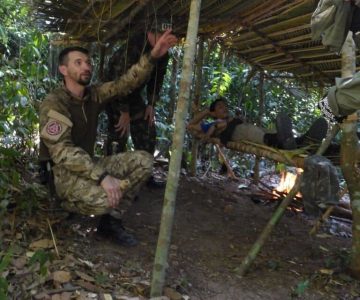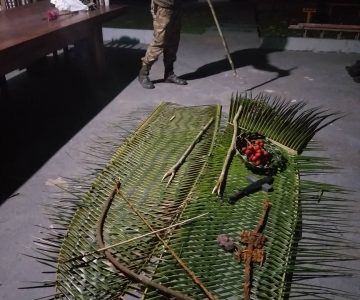
Manaus / Amazonas, Brazil
5 days course + recommended acclimation time
10500 SEK + Flight
NOTE! This course is held by our friend Costa Bushcraft and Survival in cooperation and promoted by us from All in Nature Sweden.
Nya datum kommer snart!
This course is held by our friend Costa Bushcraft and Survival in cooperation and promoted by us from All in Nature Sweden. (Facebook: Costa Bushcraft and Survival)
Jungle Survival is designed to provide a real survival experience in a jungle environment, revealing some secrets and learning techniques used by Indians, as well as military personnel from the best jungle troops and inhabitants of the largest rain forest in the world!
The TEAM
The team is composed of professionals, military, veterans, biologists, bushmen, riverine, with extensive experience, and a support team structure (Salvador, Translator, Cook and Security) for the smooth running of the course.
The Amazon
The almighty Amazon Rainforest. It is .500.000 km2 and covers 9 countries and half of the Brazilian territory. It also houses one-fifth of the world´s fresh water in the Amazon Basin. Roughly speaking there are 3 main types of vegetation there.
- Dry Land Forests – Located on higher lands which do not get flooded. Trees are tall and hundreds of vines and other plants live in and depend on their canopies.
- Wet Forests – These are found on lower lands and they get flooded periodically. Trees are adapted to withstand high waters for a few months. The soil is rich due to all the organic matter that is brought by the waters.
- Igapó Forests – They are located down by rivers where the ground is constantly flooded. It features smaller trees located further apart as part of their adjustment to the environment.
Because the Amazon Forest is placed north and south of the Equator, temperatures there are very high and there is a lot of the humidity in the air, up to 80% in average. There are only two seasons: The Rainy season and the droughts. It is also the home of thousands of animal species.
Contents
- Jungle Environment acclimation
- Safety rules and survival mentality
- Jungle orientation and navigation
- Blade use and maintenance
- Improvised shelters
- Knots & lashing
- Improvised lashing and cord making
- Fire making
- Water collection and treatment
- Survival camp planning
- Ophidism and venomous animals
- Fishing and hunting traps
- Edible plants
- Edible animals
- Hunting and fishing gear making
- Night hunting
- Land-Air signaling
- Crossing Water Ways
- Food preservation and cooking
- Animal tracking
- Missions of survival simulation
Contents
- River extraction
- Visit to where the waters come together
- Swimming with local dolphins
- Restaurant
- Indigenous-camp visit
Equipment List
- Flashlight (with spare batteries, prioritizing waterproof flashlights).
- Whistle.
- Compass.
- Clock.
- Multi-purpose knife. (not obligatory)
- Lighter or flint.
- Container for 2 liters of water.
- Medium capacity backpack. (waterproofed with plastic bags)
- Spare clothes (for 5 days)
- Machete (sharpened)
- Rope of 6 meters.
- Material for annotation (quick serve, waterproofed)
- 2 Lightsticks.
- Black tarp 3×3 meters.
- Small mosquito net.
- Cup or Mug.
- Cutlery.
- Survival kit (student discretion, no obligation)
- Mosquito repellent (2 tubes)
- Sunscreen for 5 days
- Raincoat
- Foot care kit (talc, minancora, dry cloth, tape)







